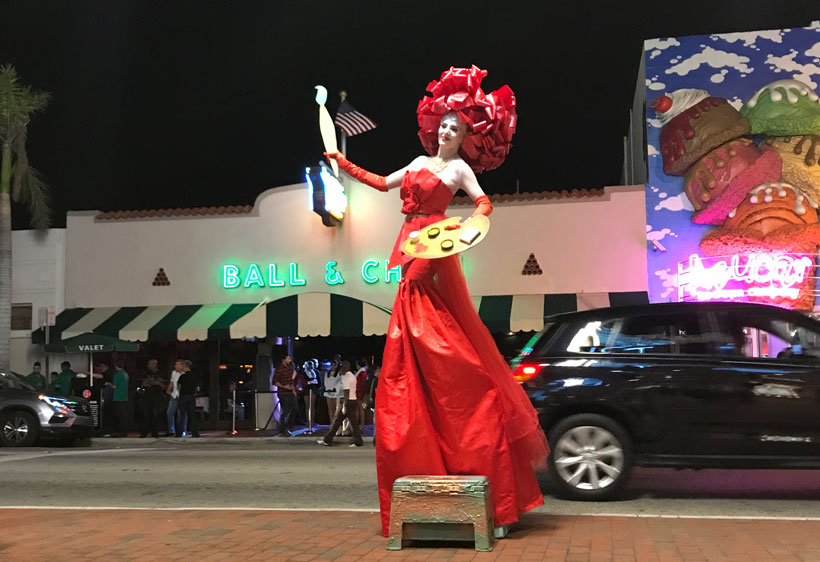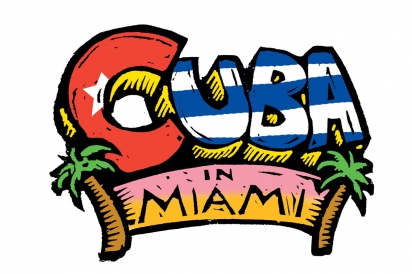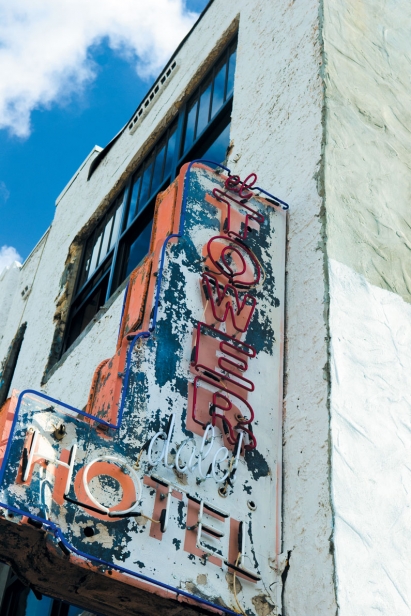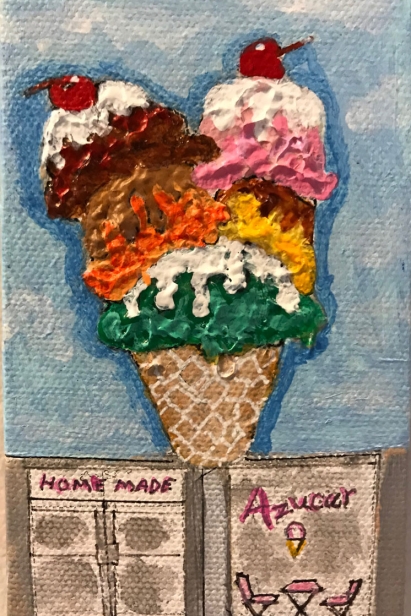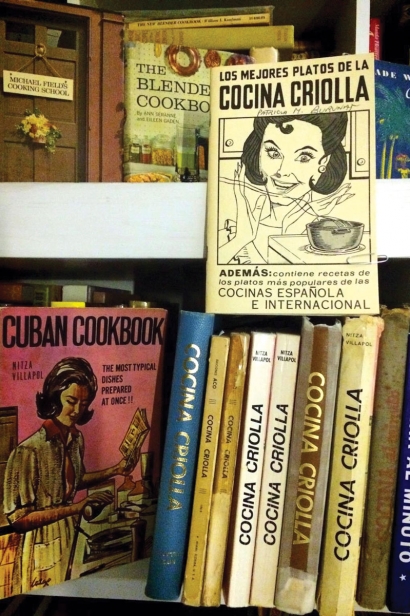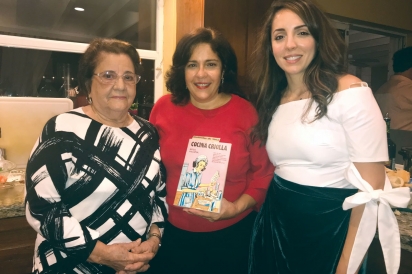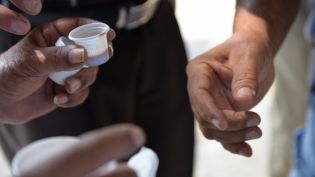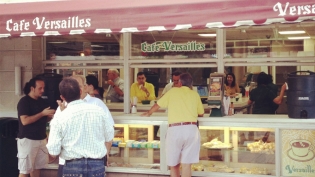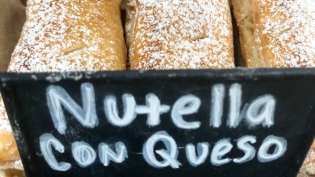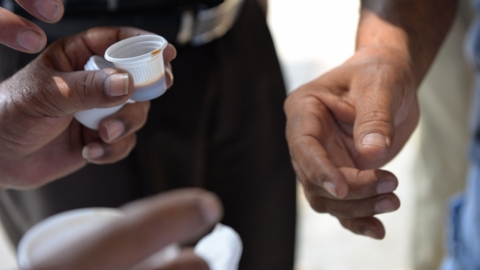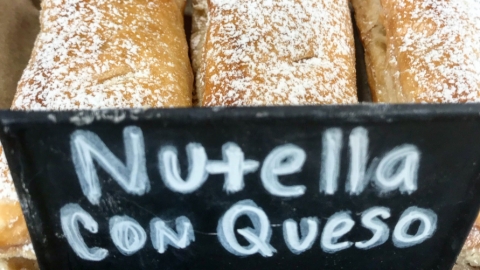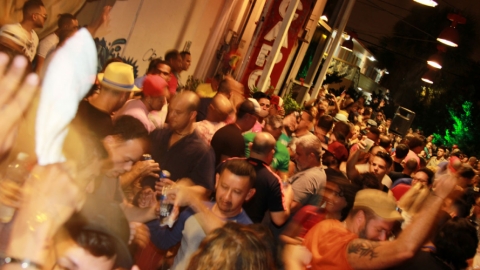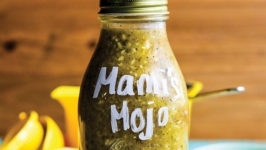Cuba in Miami
This is not your abuelo’s Miami. Today, a younger generation of Cuban-Americans – who may not even speak Spanish well – are giving Little Havana, Westchester, Hialeah, Kendall and other South Florida suburbs a flavor all their own. They are reinventing what a pastelito tastes like, discovering the best way to display their heritage, to explore their culture and express it artistically, with one foot grounded in respect for the past and the other stepping toward the future. And, no matter where your parents or grandparents were born, the newest crop of places to eat, drink, explore and party makes it feel like we are all Cubans here.
Bill Fuller and the New Little Havana
For urban developer Bill Fuller, who plays a key role in shaping the neighborhood for the future, it’s all about polishing the classic gem that is Little Havana. “This is a passion project,” says Fuller. “We grew up with Cuban culture. How do we tell that story?”
Fuller, 40, a Miami native with family roots in Cuba, has been involved for years in Little Havana’s development on multiple fronts. He’s co-owner of Ball & Chain, the historic Miami bar and lounge that resurrected Calle Ocho’s nightlife when it opened in 2014. He and Martin Pinilla co-founded the Barlington Group in 2004, acquiring and developing projects that include the Tower Hotel and other multi-family, retail, office and mixed-use buildings.
Nearly 20 years ago, the working-class community got a boost of culture that started the ball rolling. “In 2000, Viernes Culturales introduced artists to the neighborhood,” he says. In 2011, Suzy Batlle opened Azúcar, an artisan ice cream shop that playfully promotes its Cuban identity through flavors and t-shirts. In 2014, Ball & Chain debuted, showcasing its rich history, and giving tourists a place to enjoy a mojito and live Cuban music by day, and locals a new nightlife venue. As independent restaurants open along Calle Ocho, Fuller says they’re seeing more visitors than ever – “the same clientele that would go to Wynwood, the Gables, the Grove. New York City has Little Italy and Chinatown and Miami has Little Havana,” Fuller says.
Upcoming projects include a Cuban-themed event space next to Ball & Chain, and the Museo of Little Havana, a project in partnership with HistoryMiami Museum. Another is the Paseo del Ron on 14th Avenue, where Miami Club Rum will have a small distillery and local market for visitors. And the debut of the 50-room Tower Hotel is on the horizon. “We’re close to announcing a relationship with a South and Central American hotel and hostel operator,” he says. The hotel, used recently for the Juggerknot Theatre Company’s production of Miami Motel Stories, will feature cultural experiences, like conga and salsa lessons.
First-generation Cubans may not share a happy nostalgia for the neighborhood, Fuller says. “When you talk about the 1960s, families thrown into apartments without means who lost everything, they were distressed. 1960s Little Havana was not a good time,” he says. “What has happened is my generation has come back and acknowledged that this is an important part of our culture.”
Nitza Villapol and the Essential Cocina Criolla
‘Do not underestimate this book, mi hija,’ my mom tells me as she hands over a book with a faded pink cover, an artifact that’s been in our house since the beginning of time.”
So writes Elly Dominicis in her blog, “Eat with Your Eyes Closed.” The book is Cocina Criolla by Nitza Villapol, a chef, cookbook writer and television host in Cuba. Between 1948 and 1994, her show on Cuban television taught homemakers how to cook. Cocina Criolla and Cocina al Minuto became guidebooks for Cuban recipes as well as the food situation on the island. Early editions featured American products. As those items disappeared from shelves, Villapol adapted her recipes accordingly. “Living in Cuba meant living in difficult circumstances and Villapol was that woman on TV helping people make do with what they had (¡hay que resolver!),” says Dominicis.
Meanwhile, families fleeing Cuba during the revolution brought their copies with them. Bootleg copies appeared in bookstores in Miami. Women learned to cook with her recipes, then handed down the cookbook, often with notes scribbled alongside the recipes, to their daughters when they got married.
Villapol’s cookbooks are the bridge to the past for many, such as Christina Gomez-Pina, 42, who decided to cook her way through Cocina al Minuto and share the results on her blog, “La Cocina de Christina.” “I was realizing that the old ladies in our families were dying and along with their passing, so were the recipes. I didn’t want my kids and their friends to only know what picadillo was because they ordered it at a restaurant,” she says. Now halfway through 629 recipes, she says it’s a great feeling “knowing that in working my way through the cookbook, kids from my generation are now cooking like their grandmas in their own kitchens.”
But many of today’s second- and third-generation Cuban Americans who want to preserve their culinary heritage lack Spanish-language skills to successfully navigate the recipes. This was the dilemma of Miamian Amanda Finuccio, who was lamenting the lack of her own family recipes a few years ago. Answered her mother: “We’ve always had Nitza’s cookbooks.” Finuccio, a graduate student living in New York City, says she’s never been able to cook from them “without some serious help from Google Translate.” So she proposed the idea of an English translation to Jai-Alai Books, the Miami-based publisher under the umbrella of O, Miami, where she was a fellow in 2014.
P. Scott Cunningham, Jai-Alai Books’ founder, went online to track down a copy of Cocina Criolla, but they were going for $400+ for used copies. Then he wandered into the back of a Miami Goodwill store where he spotted a 20-year-old bootleg copy from Mexico in good condition for a dollar. When he went to pay, the woman at the register asked, “Where did you find this? This is my childhood!” “She started to tear up,” says Cunningham. To her, he says, the book represented relationships. “I could tell this was more than a cookbook.” They took on the translation.
It’s been a long, arduous project, with four different translators, lots of copy editing, he says. “We’re not trying to recreate the recipes, but we want to make sure the translations are accurate.” Cunningham says they are leaving in eccentricities, like American brand names in the first version, and terms like “osterize” instead of “blend.” They turned to Ana Sofia Peláez, author of The Cuban Table, to write the introduction for the translation.
“Everyone has a complicated relationship with this book,” says Peláez. “It is flawed. It’s a home economics manual. It is practical and served its purpose, a perfectly preserved piece of history. What I found interesting is that you wanted to have a neat arc. But there’s no simple ending, she had her beliefs, no resolution.”
For Amanda Finuccio, Cocina Criolla “is where everything my grandparents did to give me the life I know today meets everything my generation values about the Cuba we have only ever heard of. For me, food is my most celebrated representation of culture. There is nothing that cannot be linked to the plate — family, health, history, agriculture.”
FIND OUT MORE: Nitza Villapol’s Cocina Criolla, translated into English by Jai-Alai Books, will be available in the first quarter of 2018. jai-alaibooks.com


